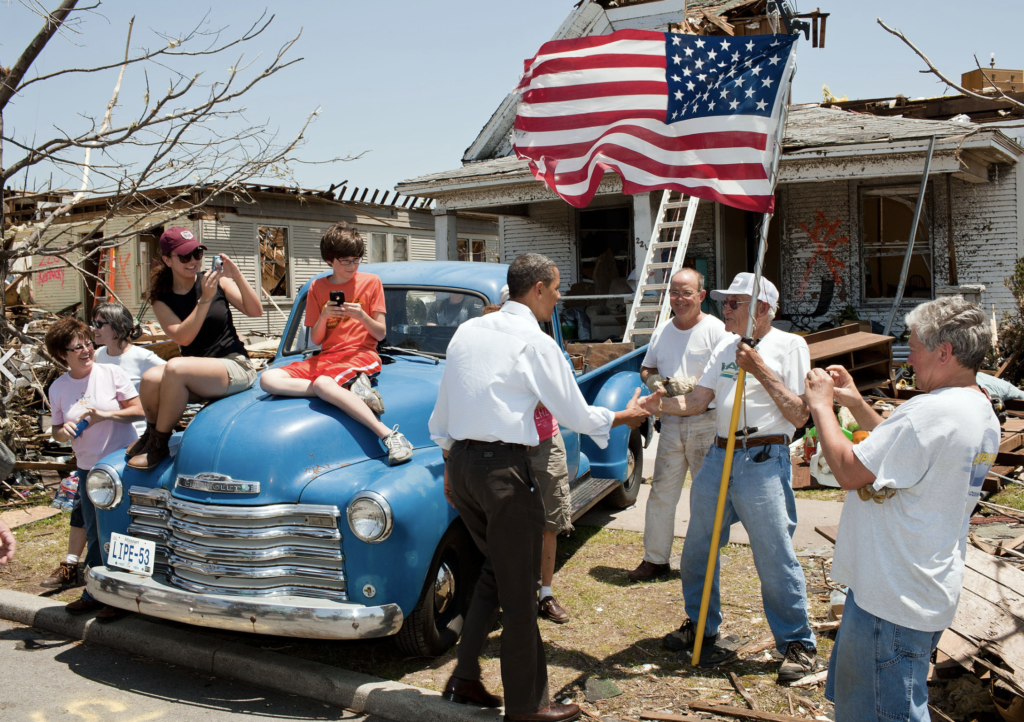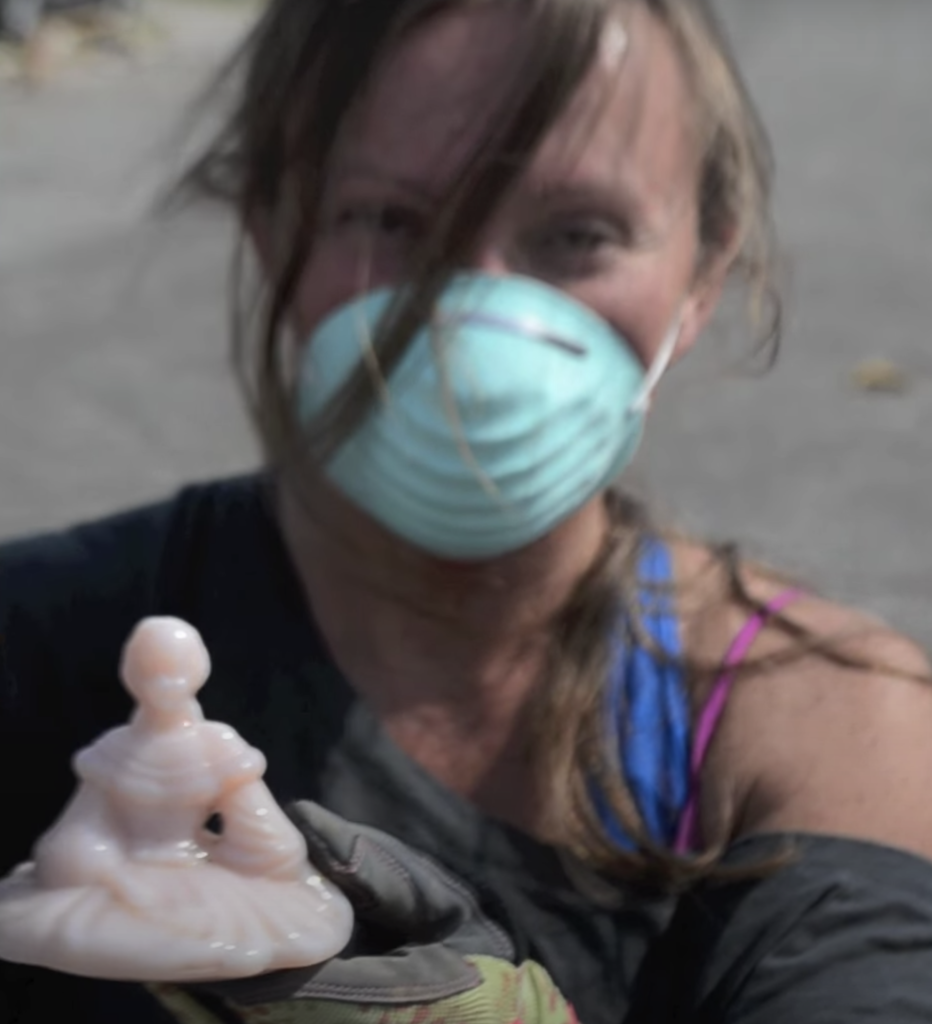It couldn’t have come any sooner. After weeks on end of school and mind-numbing web design, I was ready to head west on my cross-country bus trip, leaving behind my website and all my worries.
The bus journey which would take me through the heartland of America, would seem interminable – four brutal days and sleepless nights. Could I tolerate the middle-of-the-night disruptions, filthy bathrooms, the constant chit chat?
In June when school was out, I boarded a Greyhound from Baltimore heading west. I was heading to San Diego to run a marathon with my friends before I headed north to Vancouver to find a web developer for my site. But at the last minute, I decided to make a stop in Joplin. A EF-5 tornado tore through the heart of Joplin in late May, and they were in desperate need for relief and recovery.
A full figured woman, in her early 20’s sat a few rows behind me in a very rowdy bus where a couple boisterous dudes were cracking us up. The cracks were coming at a feverish pace which was exactly what we needed to establish the right mood for the long journey. One hooligan was getting fresh with this girl causing her to pitch a fit.
“Young lady, please get up and sit somewhere else then. The rest of you brats – if I hear another peep from you, I’m gonna pull over and drop ya’ll off on the side of the highway where you’re gonna have to thumb your way home,” the bus driver announced indignantly.
The ruckus subsided, but for the next few hours, I still didn’t get a lick of sleep. At the transfer in St Louis, I joined the other backpackers lounging on the floor. I was headed to Joplin for tornado relief – my body, my mind yearned for respite.

Suddenly my siesta was interrupted by a soft rendition of Keyshia Cole’s “Love”. She had a voice that could move mountains and a face that could launch a thousand truck
“Wow, you have an amazing voice!” I exclaimed.
“Thank you. Maybe my voice will make me rich and famous one day.”
“I certainly hope so. What’s your name so I’ll know to look you up some day.”
“Damaris. I’m heading to Ok City to visit my aunt.”
Then as I boarded the bus in St Louis, my bus driver declined to drop me off in Joplin, no matter how benevolent the reason. She gave me a hard time about not letting me offload my bike and told me that I would have to pick it up when we finally arrived in San Diego. That all got cleared up after explaining to the station manager and pleading with the bus driver after she ripped me a new one. Thankfully, the driver relented and I got off at Joplin to assist with the tornado relief. Meanwhile Damaris continued to Oklahoma City.
“Stay safe,” she said. “Hope to meet again some day.”
“Well, eventually, I’ll be heading west to find someone who can help me create a restaurant search engine. Maybe you can use it one day.”
Damaris rolled her eyes, doubtful that either one would be in the cards.
I arrived in Joplin, Missouri, road weary but head strong for whatever lay ahead. When I stepped off the bus, my sour, sweaty smell of three days of rolled on antiperspirant evaporated like steam in the scorching Missouri sky. Despite lugging an extra bag around from bus to bus I was now deeply grateful that I had decided to bring my Dahon foldable 12-speed roadster along. There was no one to greet me, not even a soul on the street. It was a lonely Greyhound station in a mid-sized municipality, some parts showing virtually no sign that a deadly EF-5 Twister had rolled through only a week ago.
The Joplin tornado is the costliest single tornado in US history with damage estimated at $3.18 billion (adjusted for inflation). 553 businesses and 7,411 homes were damaged or destroyed affecting more than 17,000 people. The storm reached a maximum width of nearly one mile during its path through Joplin killing 158 people (with an additional eight indirect deaths).
President Obama and his entourage had just visited and spoke in front of hundreds with Governor Nixon. “This is a national tragedy,” Obama said. “We’re not gonna stop until Joplin is back on their feet.”

President Barack Obama greets Hugh Hills, 85, in front of his home in Joplin, Mo., May 29, 2011. Hills hid in a closet during the tornado, which destroyed the second floor and half of the first floor of his house.
Flags were flying in half mast. Emergency response vehicles and TV trucks filled up a parking lot at a mall. A National Guard hummer drove through the desolate downtown like it was in Iraq after the Battle of Ramadi.
The campus of the Missouri Southern State University, where the AmeriCorps had setup their task force was four miles from downtown, and taxis weren’t readily available during a crisis. I loaded all my luggage on the bike (Macbook Pro, Nikon 5100, sleeping bag, and thankfully only a few pieces of clothing) and pedaled my way to the Volunteer Relief Center.
By the time I arrived on campus, all the volunteers had already departed for the day, scraping the thick crust of grime covering their arms and legs. The staff was putting things away and in the cafeteria, a large throng of AmeriCorps members were busy debriefing the day’s events. I was fortunate to catch the tail end when the staff decided to recognize each other for their hard work and dedication. I pulled out my camera and started filming, unbeknownst that what would happen next would be something quite remarkable. This is where I met Quinn, Julie, Abby and Will — incredible people who sacrificed tremendously to serve Americans in need. They called on each other and recognized their contributions. Then they presented a rose as a token of appreciation. I choked as I held back tears for people I didn’t even know. But after sharing with us something special from inside, I felt that they would be dear friends for life.
The accommodations at the college was better than anything I could ever expect. Yes, I don’t have place to sleep and I haven’t had a decent meal since arriving here (except sliders and snacks). But the building was new and the couch that I slept on was extra firm and surprisingly comfortable. I was blessed to have a roof over my head considering the thousands of people who are homeless due to the twisters. Tomorrow would be a big day ahead.
Julie was one of the first team members that I met. Incidentally, she was from College Park, Maryland. I could tell that she had a lot on her plate, so I asked how I could be of help.
Currently, the overflow of support from Americans everywhere had been enormous. Thousands of people called United Way and AmeriCorps offering their homes, cars, computers, cell phones, tents, food, clothing, etc. AmeriCorps then posts this info on their Facebook page.
The issue with these postings was that there were static and there was not one clearinghouse that gathered this information. It was not sortable or searchable and definitely not user friendly. By creating an online database, donors and survivors can more easily and completely come to terms with donations.
“We’re getting dozens of calls a day from people offering to donate goods and services to survivors. We’re simply posting these offers on our Joplin Tornado Relief Services Facebook page. However, it would be nice to have a database where this information can be posted.
Julie told me everything she needed, and I spent the first 2 days on campus creating an online database with Drupal (which I literally learned on the go). It was after a lot of painstaking research and trial and error that the database was stood up — a small but momentous cause for celebration.

The first time I got to see the damage, I was shellshocked. Trees that were left standing were stripped bare by the intense winds.
My next goal was to document the heroic contributions of the AmeriCorps’ disaster relief teams. Spending the last three days working alongside with them, I had nothing but wonderful things to say about this dedicated group of young men and women. They were bright, innovative and selfless, never counting the costs of uprooting their lives to serve our country in need with very little pay. With people like Abby, Julie, Will and Melissa, I was left impressed and thankful for their sacrifices.
But there was only one problem: I didn’t have any closed toe shoots. Traveling on Greyhound, I had to travel light. Thank goodness, Abby came to the rescue and lent me her boots for the day.
The next day I visited the site ravaged by the tornado and met some of the victims. It had already been an amazing whirlwind tour in what has already been a very long journey for disaster relief for one of the deadliest single tornado in America.
I met Christina on the bus going out to the field. Originally from Georgia, her mother owned a house an hour from here. An outdoor person with a warm heart, she loved to snow ski, windsurf, sail and pitch a tent. Christina would be spending the next month sleeping in tents, volunteering for both the AmeriCorps and the Ozark Food Harvest. After this stint, she would be heading north to Alaska.
I spoke to Christina as she cleared debris and collected memorabilia. One of the hardest parts of the relief effort was recovering personal belongings. Many of the pictures, some over a generation old, would be digitized and posted online in hopes that someone would claim them. Christina found some dental records, books, videos and a porcelain figurine.

Debris piled near the street would be picked up by the U.S. Army Corps of Engineers.
I also spoke to Chelsea, another volunteer who lives in the area.
“Many people think we’re a small town. The population in Joplin is 50,000, but actually 300,000 people work and shop here,” she said. “Lots of folks commute from neighboring town — like me.”
Yes, Joplin is no sleepy Mayberry.
I was humbled and honored to meet Jerry and Debby, one of the homeowners who lost two houses: theirs and their daughters. Jerry was actually in his truck when the deadly twister hit. He was lifted up and spun around before being dropped in front of his house. His house was pulled straight out of the foundation and blown to bits. House after house for miles in all directions was literally reduced to slab. Cars and trucks were crushed like soda cans. Jerry was fortunate to have made it out alright. His house was reduced to shreds, but he was blessed to have his life and that of his lovely family.
“It’s slowly sinking in,” said Debby, as she looked through some old photos. “It’s taken a week for me.”
“Yes, we really need to come here and experience it. Watching it on TV is not enough,” said Chelsea.
“And it’s important to look at your belongings as just items that come and go. They are not attached to you personally — it’s time to move on,” Christina added.
Some volunteers like Brian Slebodnik spent the entire week working at the Salvation Army sorting out food and clothing for the survivors. Some provided canteen services (feeding, hydration and spiritual support) for the survivors and volunteers in the field.

Soon, the relief effort will draw to an end and the city will shift into a reconstruction phase that will last for many years.
After spending 5 days in Joplin, I was left inspired by the service and dedication of Americorps and the strength and spirit of the survivors. The people of Joplin have truly come together and shown how a community can survive a disaster and start to rebuild their lives as they rebuild from the wreckage.
